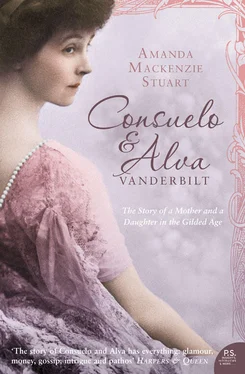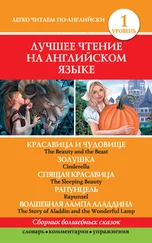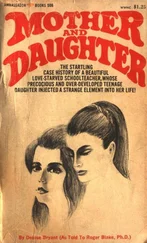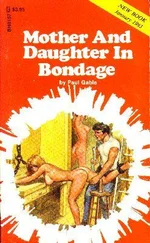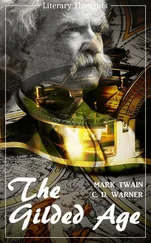Age: Eighteen years Chin: Pointed, indicating vivacity Color of hair: Black Color of eyes: Dark brown Eyebrows: Delicately arched Nose: Rather slightly retroussé Weight: One hundred and sixteen and one half pounds Foot: Slender, with arched instep Size of shoe: Number three. AA last Length of foot: Eight and one half inches Length of hand: Six inches Waist measure: Twenty inches Marriage settlement: $10,000,000 Ultimate fortune: $25,000,000 (estimated). 2
As wedding preparations entered the final phase, a few enterprising passers-by near St Thomas Episcopalian Church on Fifth Avenue managed to peep in at the construction of the most spectacular wedding floral display ever assembled in a New York church: great flambeaux of pink and white roses on feathery palms at the end of pews; vaulting arches of asparagus fern, palm foliage and chrysanthemums; orchids suspended from the gallery; vines wound round the organ columns; floral gates constructed from small pink posies; and sweeping strands of lilies, ivy and holly swaggering from dome to floor, feats of festooning over 95-feet long. There was no shortage of other detail available for those with insufficient initiative – or interest – to seek it out for themselves. The press even provided lingering descriptions of the bridal underwear: ‘It is delightful to know that the clasps of Miss Vanderbilt’s stocking supporters are of gold, and that her corset-covers and chemises are embroidered with rosebuds in relief,’ said the society magazine Town Topics. ‘If the present methods of reporting the movements and details of the life and clothes of these young people are pursued until the day of the wedding, I look for some revelations that would startle even a Parisian café lounger.’ 3
On the morning of 6 November, it was soon apparent that uninhibited staring was the order of the day. The wedding was at noon. At 72nd Street and Madison, where the bride was dressing at her mother’s house, the crowds started to gather before 9 a.m. and soon lined the entire route to St Thomas Church, twenty blocks away at 53rd Street and Fifth Avenue. At 72nd Street no-one was allowed within a hundred and fifty feet of Alva Vanderbilt’s new home, but all kinds of tactics were deployed by certain individuals determined to subvert the rules. By 10.30 a.m. the crowd had grown to around two thousand people, and windows in every house in the neighbourhood were crammed with spectators enjoying small private parties of their own. Curiosity was not confined to the common herd. Gertrude Vanderbilt’s outburst at the manner in which heiresses were watched was more than vindicated for lorgnettes were much in evidence and The New York Times noted that halfway down the block towards Park Avenue, women could be seen standing in bay windows peering out through opera glasses for glimpses of the bridal party. 4
As the morning wore on, crowd control outside St Thomas Church became increasingly difficult. Reporters fell back on military metaphor. Acting Inspector Cartwright was in overall command of forces; Captain Strauss was deployed with his platoon at the home of the bride; further detachments were stationed by the church preventing incursions on the left flank; and all faced a difficult and unpredictable enemy. ‘Picture to yourself a space 15-feet wide and 100-feet long,’ said the New York World , ‘tightly packed with young women, old women, pretty women, ugly women, fat women, thin women – all struggling and pushing and squeezing to break through police lines. Then imagine all those women quarrelling one with another, then struggling and pushing and squeezing and begging, imploring, threatening and coaxing the police to let them pass.’ 5
The most pressing problem for Inspector Cartwright was that some of the women came from good homes which put him in an invidious position and obliged him to give orders that clubs should not be used. ‘Had you seen those policemen pressed to desperation turn and push that throng back inch by inch, half crushing an arm here, poking a waist or a neck there, collecting three women in an armful and hurling them back, the crowd would have reminded you of nothing so much as an obstreperous herd of cattle,’ said one reporter. 6
There were compelling reasons for such intense curiosity. In an age of international marriages, of trade between American money and European titles, this was the grandest. The New York World went straight to the point: ‘Miss Consuelo Vanderbilt is one of the greatest heiresses in America. The Duke of Marlborough is probably the most eligible peer in Great Britain … From the standpoint of Fifth Avenue it will be the most desirable alliance ever made by an American heiress up to date.’ 7 The engagement was presented by others as an all-American tale that held out hope for everyone, even the poorest. ‘The world is actively engaged in making its fortune,’ said Frank Lewis Ford in an article in Munsey’s Magazine. ‘Though sometimes it calls the task by another name and says that it is earning its living, acquiring a competency, building up a business, or what not. And there stand the Vanderbilts, with living earned, competency acquired, business built up, fortune made.’ 8
But to those in the know – and there were many people in the know thanks to the nature of the press in late-nineteenth-century New York – this was all too simple. The newspapers buzzed with rumours. Was it true that this wedding would break the heart of at least one eligible American bachelor? Was the English Duke simply marrying the eighteen-year-old bride for her money? And where were the Vanderbilts? Was it really possible that none of them had been invited? In America in the 1890s the lives of the very rich provided community entertainment supplanted later by cinema and television. This wedding alone was a soap opera with enough story lines to satisfy the most avid audience, laced with the faint but thrilling possibility of further drama at the church door. Might the eligible bachelor appear? Would rogue Vanderbilts attempt to force an entry? Could there be a misguided attempt to kidnap Consuelo to prevent her from marrying a blackguard, and stop her fortune from leaving the country? It was certainly worth waiting around to find out.
The wedding guests seemed just as determined to make the most of the occasion as the crowd. Some of them arrived as early as 10 a.m., a full two hours before the ceremony was due to start. This presented the embattled Inspector Cartwright with another headache because those in the crowd who had arrived early to obtain a good vantage point now refused to make way for the wedding guests, and had to be forced back inch by inch across the street. The guests, meanwhile, were required to dismount from their carriages and make their way to the church on foot. Here there were further difficulties, for the doors of the church were still tightly closed, creating a genteel but tense scrum as the ton barged each other out of the way. When St Thomas Church finally opened its doors, the gentlemen ushers, selected by Alva for their experience in seating guests at weddings, had to call for police reinforcements. The guests rushed past the sexton, whose task it was to match invitations to faces and expel interlopers. They ignored the efforts of the ushers to place them according to Mrs Vanderbilt’s list. Some of them (women again) climbed over the floral decorations, deposited themselves in the central aisle reserved for the guests of honour and were only removed to less prestigious seating by the gentlemen ushers with the utmost difficulty. Others stood on their pews to peer at fellow guests over the foliage – the floral display was widely held to be a great success but it undeniably obscured the sight lines.
Читать дальше
